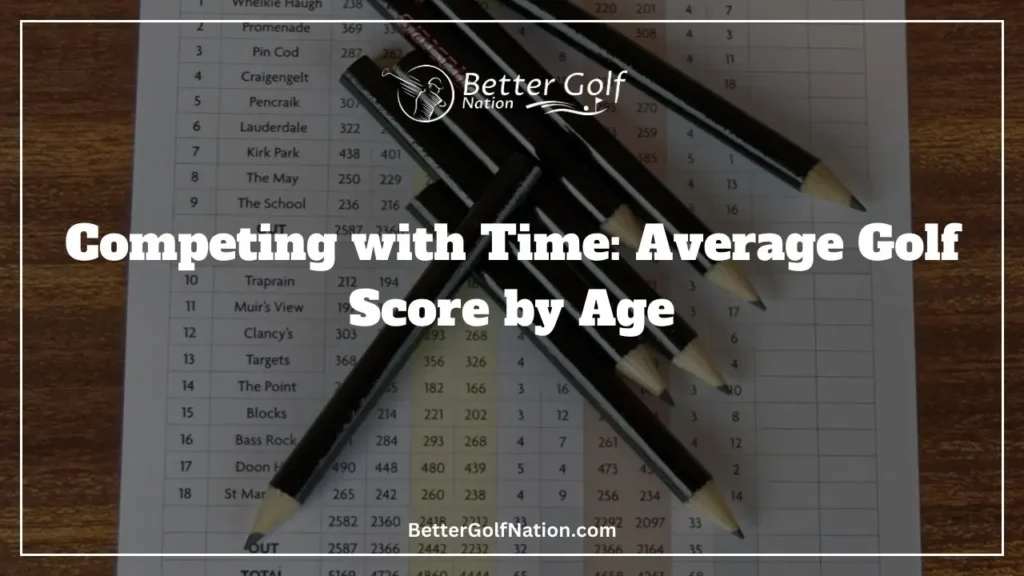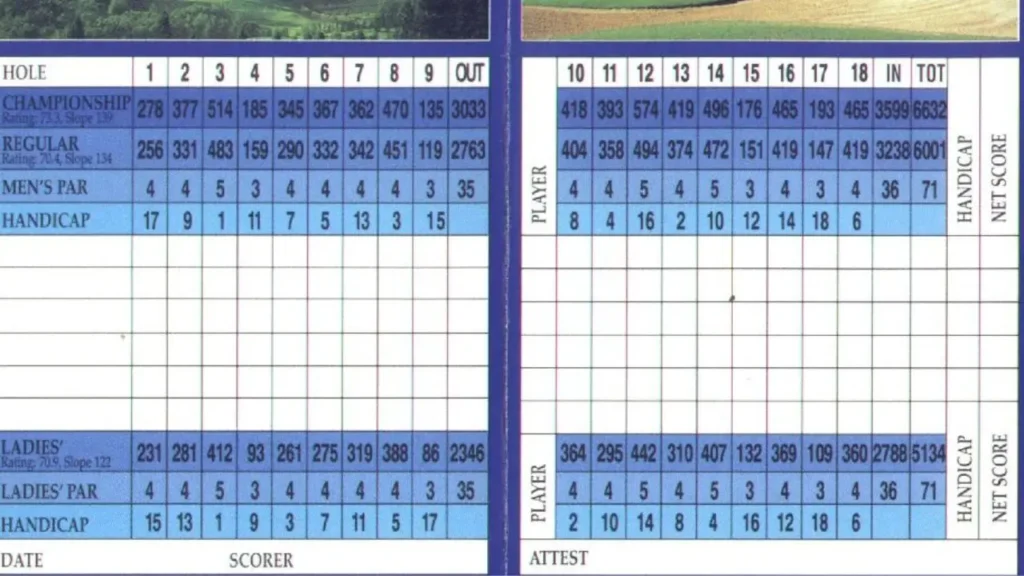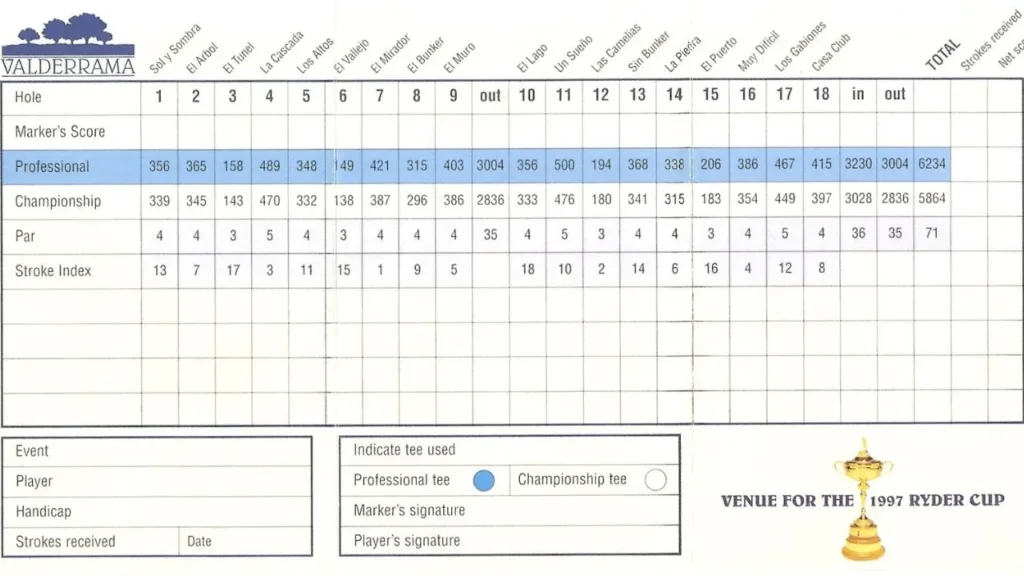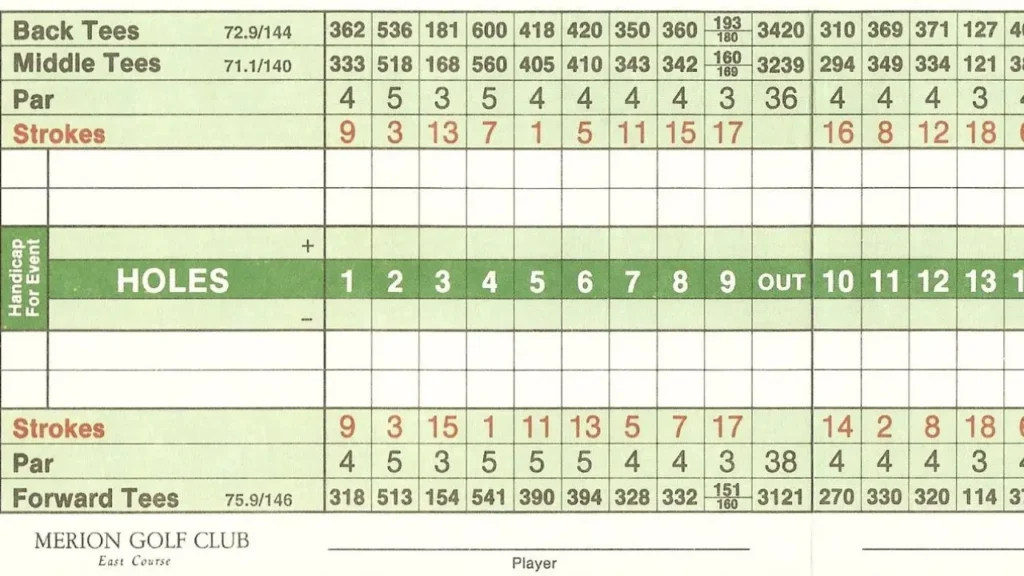Competing with Time: Average Golf Score by Age
For players under 18, it ranges from 90 to 100 strokes, while those in their 20s aim for 85–95, 80–90 for 30s and 40s, and 75–85 for over 50. However, age isn’t the sole factor; technique, fairway accuracy, and approach shots play vital roles. Improve by focusing on technique, fairway accuracy, and consistent practice.

Key Takeaways
- Golf scores vary by age, with average scores for players under 18 around 90-100, 20s around 85-95, 30s and 40s around 80-90, and over 50s around 75-85 strokes per round.
- Technique matters; investing in formal lessons or focusing on fairway accuracy over distance can significantly improve your game.
- Factors like age, experience, and physical fitness influence golf scores; practice, patience, and commitment are key for improvement.
- Handicap is crucial for tracking progress; younger players may benefit from physical advantages, while experience often compensates for age-related limitations.
- Case studies highlight diverse strategies for score improvement, emphasizing the importance of individualized approaches based on age, experience, and dedication.
Introduction
The average golf score by age can give you an idea of how well you’re performing compared to others in your age group. Golf has been around for centuries, and it remains one of the most popular sports in the world.
However, not all golfers are created equal. Understanding your golf score is essential if you want to improve your game.
The average golf score by age can vary significantly across different age groups and skill levels. For a beginner golfer, a good average score may be higher than that of an experienced pro golfer.
It’s important to note that the size of the course can also impact your performance rating. The tee shot is one of the most crucial aspects of a round of golf.
An excellent driver can help lower your score significantly, but it takes more than that to become an average golfer. Irons are equally as important as drivers when it comes to enhancing your performance on the course.
However, each iron has its purpose, so it’s essential to understand when and how to use it correctly. The typical golfer will encounter various challenges on the course that require different skills and techniques.
Enjoying this article? Read more:
Check out this video below from the Golfing Focus YouTube channel:
Skills such as chipping and putting are just as important as driving off the tee box if you want to improve your average golf score by age. Improving your game requires dedication; there are no shortcuts or magic formulas that will instantly make you a better golfer.
Experience counts for a lot in this sport; therefore, beginners should be patient with themselves and continue practicing frequently. Understanding what constitutes an excellent average golf score by age requires knowing how each stroke impacts your final tally at the end of each hole.
Determining which areas need improvement in terms of technique or strategy is key, regardless if they’re chipping or driving off from the tee box. In addition, golfers of different ages and skill levels will encounter challenges that require different approaches, so it’s important to stay mindful of these factors when assessing your performance on the course.

Understanding Golf Scores
Golf is a game that is measured by scores, and these scores are what determine one’s skill level on the golf course. entails more than just knowing how many strokes it takes to get the ball into the hole. It includes analyzing different aspects of your game, such as putting, long drives, and short game.
Scoring in golf is an art form, and to improve your game, you need to learn how to score effectively. The average score for a golfer varies depending on age range, skill level, and type of golf course being played.
However, understanding what a good score entails requires being familiar with the different par levels at various courses. For beginners or those new to the sport of golf, scoring can be a daunting task.
The emphasis should be placed on improving your skills rather than your scores when starting. Golfers should not be discouraged when they do not score well initially, but should continuously work towards improving their swings and enhancing their overall skills.
"Understanding what a good score entails, especially for beginners, is crucial. Emphasize improving skills over scores initially. Regardless of experience, continuous skill enhancement leads to better scores over time on the golf course."
Experienced players tend to put more emphasis on their scores as they compete against other players who have been playing for years. Different age groups also have different average scores due to physical ability limitations or experience levels.
At any level of skill or age range, scoring a handicap is an important aspect of measuring performance in golf that keeps track of progress over time and enables players to compete against each other regardless of skill level. Nowadays, there are advanced devices like rangefinders that help take some guesswork out when it comes to shots on unfamiliar terrain or distances from a tee shot, but these shouldn’t be relied upon entirely.
Understanding golf scores is crucial in determining one’s skill level in this sport. Whether you are a beginner golfer who has just started playing or an experienced player looking for ways to lower your score during games, it’s important to always strive towards improvement; honing your skills ultimately leads to better scores over time as you continue playing the golf course.
Enjoying this article? Read more:

Average Golf Score by Age: A Detailed Analysis
When it comes to golf, the average score varies greatly depending on the player’s age. For instance, a 20-year-old might be able to hit the ball farther and straighter than an older player, but that doesn’t necessarily mean they have a better score.
It’s not uncommon for younger players to have higher scores than older players. So what is the average golf score by age?
Let’s take a detailed look. For players under 18 years old, the average score is around 90 to 100 strokes per round.
This may seem high, but remember that these are young and inexperienced players who are still learning the ropes of the game. Moving on to players in their 20s, the average score drops slightly to around 85–95 strokes per round.
These players are likely more experienced and have been playing for a few years at least. For those in their 30s and 40s, the average score continues to drop to around 80–90 strokes per round.
These are often the peak years for golfers who have had some time to develop their skills and perfect their swing. For those over 50 years old, the average golf score is around 75–85 strokes per round.
It’s worth noting that this age range includes many retirees who may play more frequently or have more time available for practice. Of course, many factors can influence golf scores beyond just age.
Skill level is perhaps one of the most important factors affecting scoring performance rating; a less skilled golfer will naturally struggle with certain aspects of the game, such as fairway accuracy or hitting long iron shots. Ultimately, if you want to improve your golfing experience and lower your scores, then you need consistent practice coupled with using rangefinders such as GPS-enabled devices, which will help ensure you choose accurate clubs based on distance ranges so you can make more informed decisions about which club to use for a given shot.

Factors Influencing Golf Scores
Improving your golf game involves understanding the myriad factors that can impact your scores. Whether you’re a seasoned golfer or just starting, paying attention to key elements can significantly enhance your performance on the course.
Tee Shot Mastery
The opening move sets the tone for your game. Regardless of age or experience, a well-executed tee shot is pivotal. Focus on fairway accuracy, avoiding roughs and out-of-bounds areas. Tailor your approach based on age, acknowledging the unique strengths different age groups bring to this crucial aspect.
Approach Shot Excellence
Approaching the green demands skill and precision. Irrespective of your expertise, honing your technique can drastically improve your game. Selecting the right club and refining your swing mechanics are vital steps toward lowering your average golf score. Consistency in approach shots is a game-changer for golfers of all levels.
Age as a Variable
Age plays a multifaceted role in golf performance. Younger players often bring stamina and energy, while their older counterparts offer wisdom and strategic prowess. Regardless of age, commitment to practice routines is paramount. Whether you’re refining technique or enhancing decision-making skills, dedication is the key to achieving your scoring handicap goals.
Weather and Wind Factors
Experienced golfers know the significance of accounting for weather conditions. Wind can be a game-changer, affecting the trajectory of your shots. Weather conditions, too, demand consideration. Seasoned players adeptly adjust their game to these variables, showcasing the importance of adaptability on the course.
Consistent Practice for Improvement
For amateur players striving for improvement, patience and consistent practice sessions are indispensable. Focus on one aspect at a time until it becomes second nature. By concentrating on fairway accuracy, perfecting approach shots, and maintaining a steadfast practice routine, any golfer can steadily enhance their game and reach their scoring handicap goals.
Elevate your golfing experience by incorporating these insights into your gameplay. Whether you’re teeing off, approaching the green, or navigating diverse weather conditions, a strategic approach will undoubtedly contribute to better scores and a more satisfying time on the golf course.
Enjoying this article? Read more:
Check out this video below from Golf Sidekick‘s YouTube channel:
Improving Your Golf Score: Tips and Techniques
Let’s cut to the chase: if you’re reading this article, you’re probably not happy with your golf score. And despite what some may say, simply playing more rounds won’t necessarily lead to a better score. It’s time to take matters into your own hands and improve your game.
Here are some tips and techniques that could help you shave off a few strokes from your average score.
Consider Professional Lessons: If you’ve been playing without formal lessons, investing in them can be a game-changer. A skilled instructor helps correct bad habits and imparts proper form, refining your swing and ball trajectory.
Fairway Accuracy Over Distance: While a long drive is exhilarating, it’s crucial to prioritize fairway accuracy. Choose spots strategically on the fairway for a more manageable approach shot to the green. Adjust your club’s choice or setup to suit the situation.
Diversify Your Approach Shots: Break away from the routine of always resorting to your driver or fairway woods. Experiment with iron clubs, which often provide better accuracy and control for shorter shots where distance is less critical.
Utilize Scoring Handicap Systems: Consider integrating a scoring handicap system or app into your routine. It not only tracks your progress over time but also identifies specific areas requiring improvement. Witnessing positive results from practice sessions fuels motivation.
In your pursuit of a better golf game, patience and dedication are key. Embrace new techniques, seek instruction when needed, and remember that improvement is a continuous journey.
Regardless of your experience level, there’s always room for refinement. Join the ranks of those committed to progress, and don’t let the fear of change hold you back. Elevate your game, see those scores drop, and revel in the joy of improved play on the course. The average player is on this quest; don’t be left behind—embrace the journey.
Enjoying this article? Read more:

Golf Handicap by Age
When it comes to golf, one of the most important metrics is your handicap. This number represents your current level of play and can help you track your progress as you try to improve your game.
But what exactly is a golf handicap, and how does it vary by age group?
- Let’s define what a golf handicap is.
Essentially, it’s a number that reflects how well you play relative to the course you’re playing on. The lower your handicap, the better you’re playing compared to the average player at that course. Handicaps allow golfers of different skill levels to compete against each other on an even playing field.
- So how does age factor into this equation?
Well, there are a few different things to consider. For one thing, younger players may have an advantage when it comes to physical ability; after all, they’re likely at peak physical fitness and can hit the ball further than older players.
However, older players often have more experience and may be able to make up for any physical limitations by relying on their knowledge of the game. Another factor that can influence handicaps by age is simply how long someone has been playing golf. Experienced players will generally have lower handicaps than those who are just starting or who only play occasionally.
"Understanding your golf handicap is crucial for tracking progress. A lower handicap indicates superior play relative to the course average. Age influences factors like physical ability and experience, impacting handicaps. Skill development through regular practice, diverse techniques, and suitable courses remains key to lowering your score and improving your game."
Additionally, different age groups may be more likely to use certain clubs or techniques; for example, older players may prefer using an iron club for their tee shots rather than a driver, which could ultimately impact their performance rating.
It’s also worth noting that handicap calculations typically take into account the difficulty of the course being played on, so even if two golfers have similar handicaps but are playing on vastly different courses with varying difficulty levels, this could greatly impact their scoring outcomes.
Ultimately, though, while there may be some general trends when it comes to average handicaps among different age groups or demographics, there will always be outliers and exceptions depending on individual skill level and dedication towards continuously improving their game.
The best way to lower your score and your handicap is to practice regularly, utilize different techniques and tools like golf rangefinders, and play on courses that appropriately match your skill level until you feel confident enough to take on a more challenging course for golfing.

Enjoying this article? Read more:
Check out this video below from Golf Ascending‘s YouTube channel:
Case Studies: Golf Score Improvements
Improving your golf score is a struggle that all golfers face. Whether you are a young beginner or an experienced senior, there is always room for improvement and achieving lower scores. In this section, we will discuss case studies of golfers who have managed to significantly improve their scores and analyze the factors that contributed to their success.
Case Study 1
Let’s talk about John, a 50-year-old bogey golfer who struggled to get his scoring handicap down from 18 to 15. John tried several techniques, such as changing his tee shot and investing in new golf clubs, but saw little progress.
However, when he began tracking his score using a golf rangefinder, he identified weaknesses in his game and worked on improving them. He started practicing shots from the rough and hitting iron shots instead of relying solely on his driver. This resulted in significant improvements in his scoring handicap as well as boosting his confidence on the golf course.
Case Study 2
Next up is Jane, a 25-year-old beginner golfer who started playing only six months ago with no prior experience. Her initial average score was around 120 until she joined her local club’s beginners program, where she received coaching from experienced players.
Jane developed a consistent swing technique, focusing mainly on her short game, which helped her significantly lower her score by over 30 points after just three months of training.
Enjoying this article? Read more:

Case Study 3
Thirdly, we have Tom, a 60-year-old retired golfer who had achieved peak physical fitness through regular exercise before returning to the sport after several years away. Despite being out of practice for some time due to health issues, Tom utilized technology such as golf rangefinders and ball tracking software, which helped him identify weaknesses in his game and improve upon them.
With regular practice focusing on improving approach shots onto the green coupled with quality putting techniques, he was able to reach an impressive scoring handicap of six within six months.
Case Study 4
Now onto Susan, a mid-40s working woman, trying desperately to lower her golf handicap from 20 to 15. She tried different techniques, such as practicing her swing and spending more time on the golf course, but saw little results.
However, she realized she could not do it alone and started taking lessons from a professional golf coach, which paid off with remarkable results. After several months of focusing on shot accuracy and improving her distance control, Susan was able to achieve a new scoring handicap of 14.
Evaluating these case studies makes it clear that there is no one-size-fits-all approach when it comes to lowering golf scores. Factors such as age range, experience level, dedication, technology available to you, coaching, and physical fitness all play a role in achieving success in the sport. By analyzing these factors and incorporating them into your game plan, you will be well on your way to achieving lower scores over time.
Conclusion
We have learned a lot about average golf scores by age. We know that beginners typically have higher scores and that experienced players generally score lower.
We also understand the factors that influence golf scores, including physical fitness, mental focus, and equipment selection. Additionally, we’ve explored some tips and techniques to help improve your game.
At the end of the day, golf is an incredibly satisfying sport that can be enjoyed at any level of skill or expertise. Whether you’re just starting out or you’re an experienced player looking to enhance your performance rating, there are always opportunities to improve your game.
With access to high-quality golfing facilities, top-of-the-line equipment like rangefinders and irons clubs, and a commitment to practice and patience, anyone can work towards reducing their average score. It’s worth noting that despite the emphasis placed on scoring handicaps in competitive play, there’s something truly special about simply spending time on the course golfing fairway with friends or family members.
The beauty of this sport is in its ability to bring people together while also providing a personal challenge for each player. So whether you’re hitting long drives with your trusty driver or working on perfecting your approach shots with a precise iron club, remember to enjoy every moment on the fairway, regardless of your average score!
Share this Post
Toni Benedito
Keep Reading
Follow Us
Recent Posts

The Shocking Cost: How Much Does It Cost to Fly with Golf Clubs?
Flying with golf clubs can be a hassle, but it’s worth it for avid golfers. Costs vary by airline, ranging from $30 to $150 per way. Southwest Airlines offers a generous policy, allowing one set

Why Do Golfers Tape Their Fingers Before Hitting the Course?
Golfers tape their fingers to prevent injuries from repetitive motions, provide support for existing injuries, and improve grip comfort. It’s a popular technique among amateurs and pros alike, offering a lightweight and effective solution compared

How Much Does a Round of Golf Cost? Are You on Par?
The cost of a round of golf varies widely based on factors like course type, location, and time of play. Public courses typically range from $30-$100 per round, while exclusive ones like Augusta National or

Hidden Fees: How Much Does It Cost To Rent a Golf Cart
Wondering how much it costs to rent a golf cart? Explore factors like location, rental duration, and cart type impacting prices. Daily rates range from $50 to $80, while weekly rentals can vary from $200

How Much Does a Golf Bag Weigh? The Ultimate Guide
Golf bag weight varies depending on type and materials, ranging from 2 to 70 pounds. Factors include stand bags for carrying, cart bags for carts, and tour bags for professionals. Consider bag weight for game

Hitting Driver Too High? How to Fix It for Lower Flight!
Discover why hitting the driver too high affects your golf game. Learn how swing mechanics, setup adjustments, and proper equipment can help you hit longer and more accurate drives. Key Takeaways Improving swing mechanics through
Table of Contents








